ADAM9 enhances Th17 cell differentiation and autoimmunity by activating TGF-β1
- PMID: 33911034
- PMCID: PMC8106302
- DOI: 10.1073/pnas.2023230118
ADAM9 enhances Th17 cell differentiation and autoimmunity by activating TGF-β1
Abstract
The a disintegrin and metalloproteinase (ADAM) family of proteinases alter the extracellular environment and are involved in the development of T cells and autoimmunity. The role of ADAM family members in Th17 cell differentiation is unknown. We identified ADAM9 to be specifically expressed and to promote Th17 differentiation. Mechanistically, we found that ADAM9 cleaved the latency-associated peptide to produce bioactive transforming growth factor β1, which promoted SMAD2/3 phosphorylation and activation. A transcription factor inducible cAMP early repressor was found to bind directly to the ADAM9 promoter and to promote its transcription. Adam9-deficient mice displayed mitigated experimental autoimmune encephalomyelitis, and transfer of Adam9-deficient myelin oligodendrocyte globulin-specific T cells into Rag1-/- mice failed to induce disease. At the translational level, an increased abundance of ADAM9 levels was observed in CD4+ T cells from patients with systemic lupus erythematosus, and ADAM9 gene deletion in lupus primary CD4+ T cells clearly attenuated their ability to differentiate into Th17 cells. These findings revealed that ADAM9 as a proteinase provides Th17 cells with an ability to activate transforming growth factor β1 and accelerates its differentiation, resulting in aberrant autoimmunity.
Keywords: Th17 cell; a disintegrin and metalloproteinase; systemic lupus erythematosus.
Conflict of interest statement
The authors declare no competing interest.
Figures
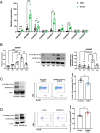
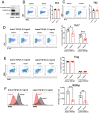

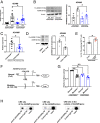
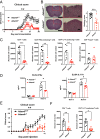
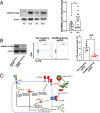
Similar articles
-
Hypoxia Promotes the Expression of ADAM9 by Tubular Epithelial Cells, Which Enhances Transforming Growth Factor β1 Activation and Promotes Tissue Fibrosis in Patients With Lupus Nephritis.Arthritis Rheumatol. 2025 Feb;77(2):180-189. doi: 10.1002/art.42987. Epub 2024 Oct 1. Arthritis Rheumatol. 2025. PMID: 39279154
-
A Disintegrin and metalloproteinase carves T cell abnormalities and pathogenesis in systemic lupus erythematosus.Clin Immunol. 2024 May;262:110168. doi: 10.1016/j.clim.2024.110168. Epub 2024 Mar 7. Clin Immunol. 2024. PMID: 38458301 Free PMC article. Review.
-
In vitro silencing of RIP2 in naive CD4+ T cells from lupus-prone mice promotes pathogenic Th17 cell differentiation.Clin Rheumatol. 2024 Nov;43(11):3515-3523. doi: 10.1007/s10067-024-07124-x. Epub 2024 Sep 5. Clin Rheumatol. 2024. PMID: 39235498
-
Transforming growth factor β1 antagonizes the transcription, expression and vascular signaling of guanylyl cyclase/natriuretic peptide receptor A - role of δEF1.FEBS J. 2016 May;283(9):1767-81. doi: 10.1111/febs.13701. Epub 2016 Apr 5. FEBS J. 2016. PMID: 26934489 Free PMC article.
-
Emerging roles of Egr2 and Egr3 in the control of systemic autoimmunity.Rheumatology (Oxford). 2016 Dec;55(suppl 2):ii76-ii81. doi: 10.1093/rheumatology/kew342. Rheumatology (Oxford). 2016. PMID: 27856665 Review.
Cited by
-
Hypoxia Promotes the Expression of ADAM9 by Tubular Epithelial Cells, Which Enhances Transforming Growth Factor β1 Activation and Promotes Tissue Fibrosis in Patients With Lupus Nephritis.Arthritis Rheumatol. 2025 Feb;77(2):180-189. doi: 10.1002/art.42987. Epub 2024 Oct 1. Arthritis Rheumatol. 2025. PMID: 39279154
-
IL-17A Promotes Epithelial ADAM9 Expression in Cigarette Smoke-Related COPD.Int J Chron Obstruct Pulmon Dis. 2022 Oct 14;17:2589-2602. doi: 10.2147/COPD.S375006. eCollection 2022. Int J Chron Obstruct Pulmon Dis. 2022. PMID: 36267325 Free PMC article.
-
A Disintegrin and metalloproteinase carves T cell abnormalities and pathogenesis in systemic lupus erythematosus.Clin Immunol. 2024 May;262:110168. doi: 10.1016/j.clim.2024.110168. Epub 2024 Mar 7. Clin Immunol. 2024. PMID: 38458301 Free PMC article. Review.
-
Insights into T-cell dysfunction in Alzheimer's disease.Aging Cell. 2021 Dec;20(12):e13511. doi: 10.1111/acel.13511. Epub 2021 Nov 1. Aging Cell. 2021. PMID: 34725916 Free PMC article. Review.
-
Cyclic increase in the histamine receptor H1-ADAM9-Snail/Slug axis as a potential therapeutic target for EMT-mediated progression of oral squamous cell carcinoma.Cell Death Dis. 2025 Mar 20;16(1):191. doi: 10.1038/s41419-025-07507-1. Cell Death Dis. 2025. PMID: 40113769 Free PMC article.
References
-
- Tsokos G. C., Systemic lupus erythematosus. N. Engl. J. Med. 365, 2110–2121 (2011). - PubMed
-
- Koga T., Ichinose K., Kawakami A., Tsokos G. C., The role of IL-17 in systemic lupus erythematosus and its potential as a therapeutic target. Expert Rev. Clin. Immunol. 15, 629–637 (2019). - PubMed
-
- Wong C. K., et al. ., Hyperproduction of IL-23 and IL-17 in patients with systemic lupus erythematosus: Implications for Th17-mediated inflammation in auto-immunity. Clin. Immunol. 127, 385–393 (2008). - PubMed
Publication types
MeSH terms
Substances
Grants and funding
LinkOut - more resources
Full Text Sources
Other Literature Sources
Molecular Biology Databases
Research Materials
Miscellaneous

